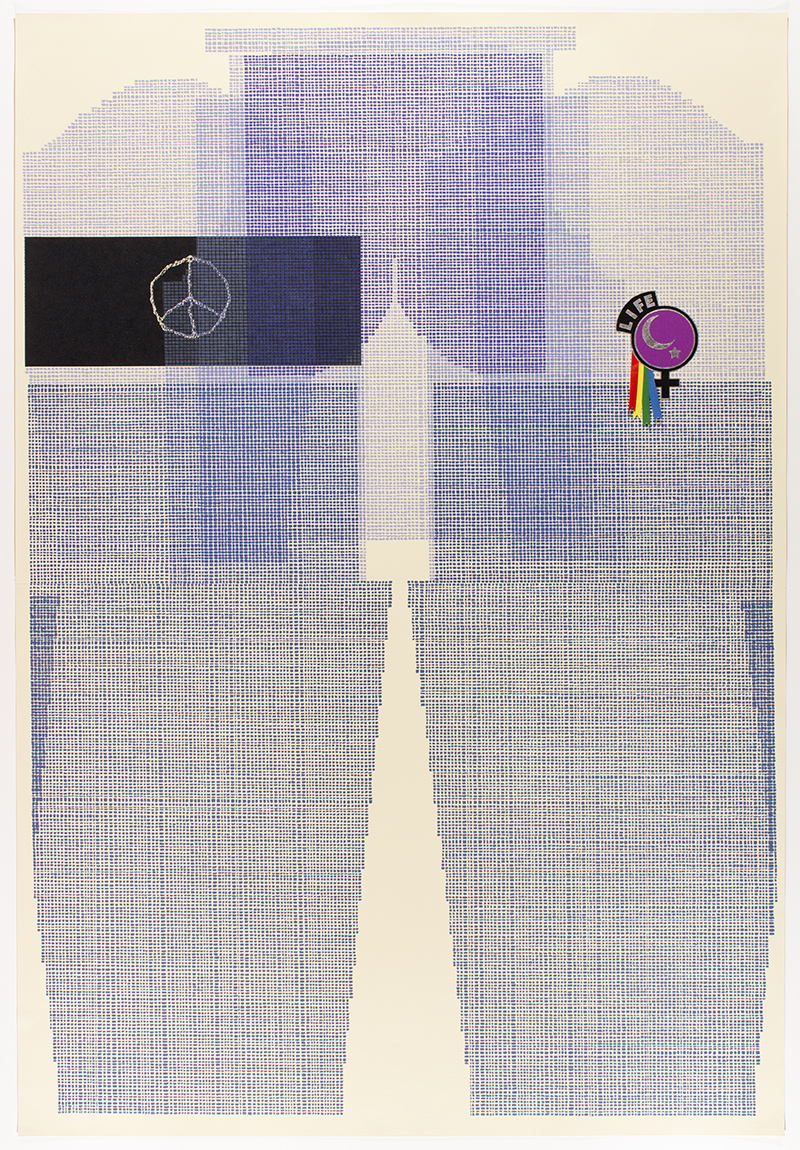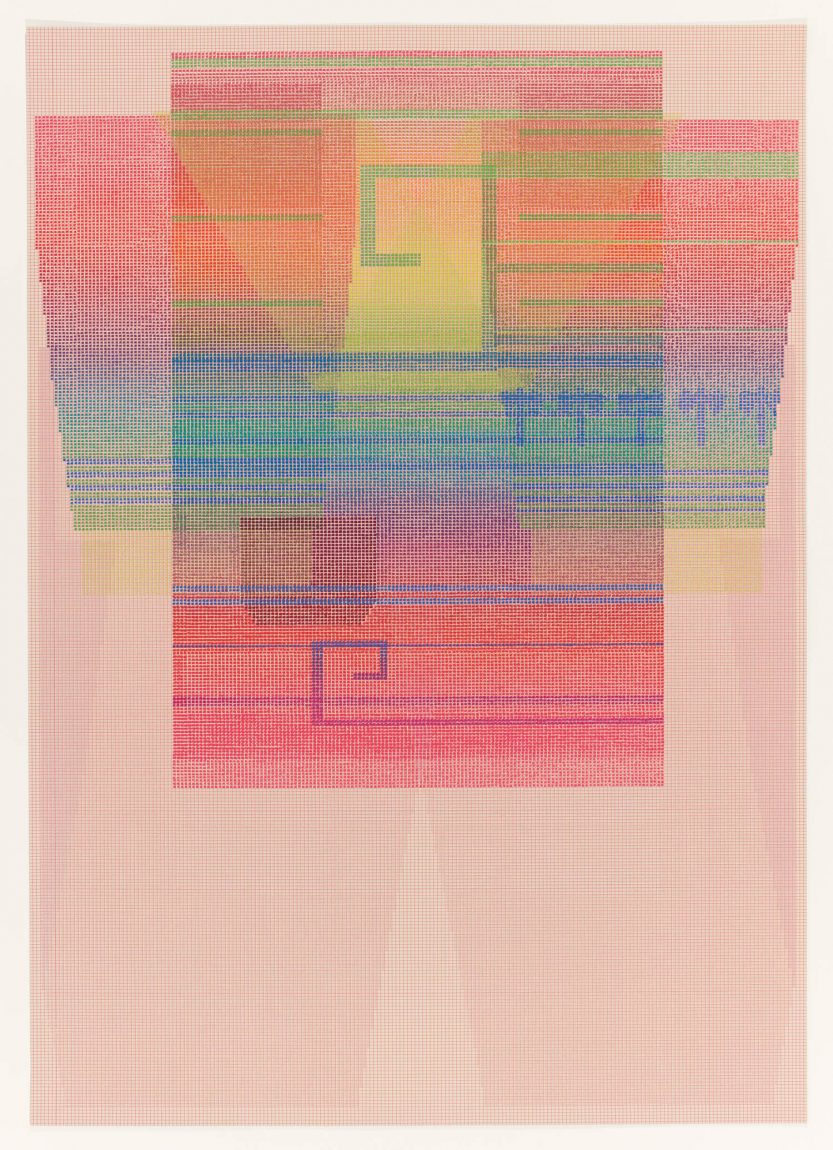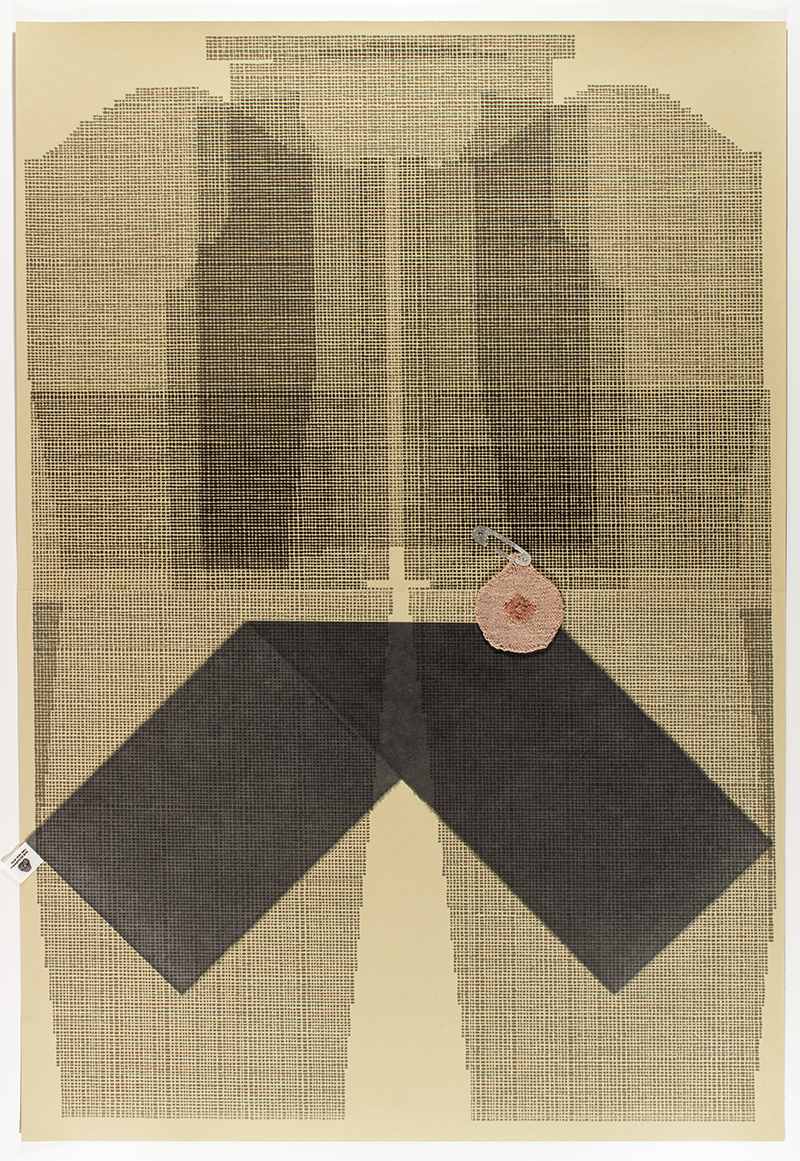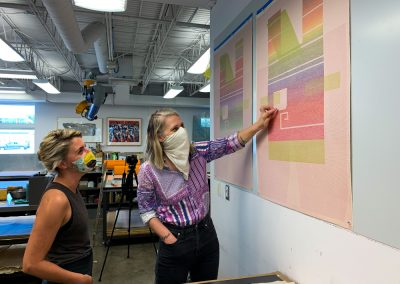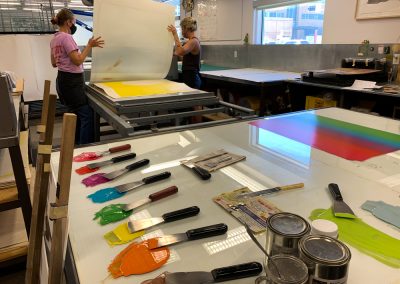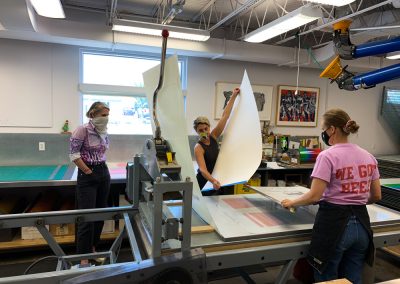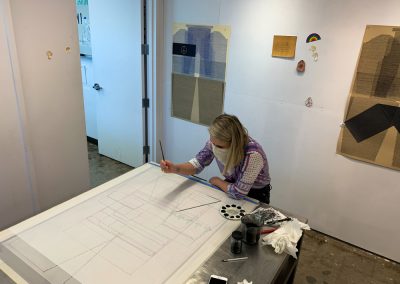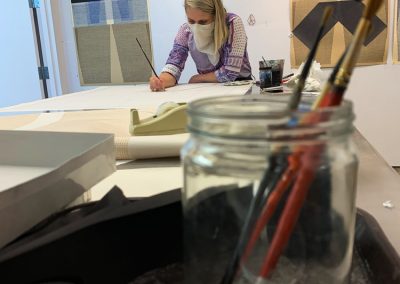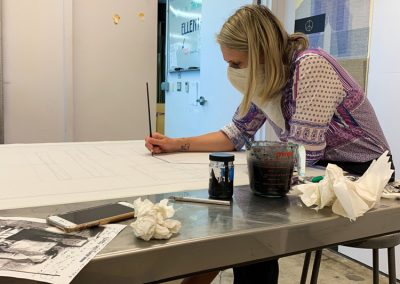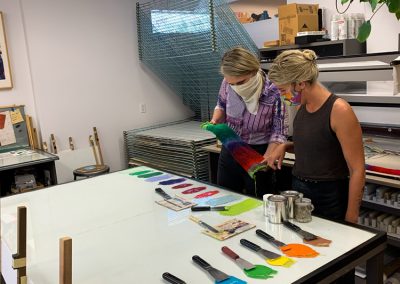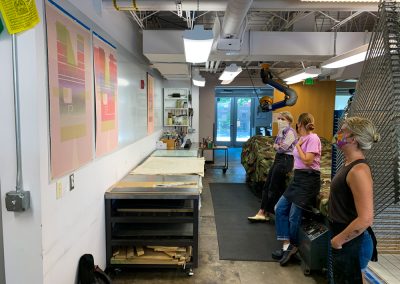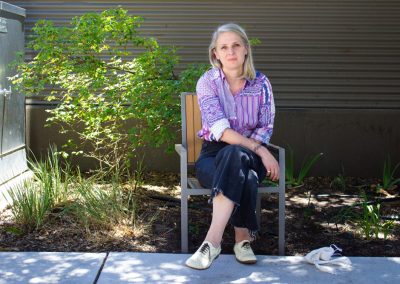-
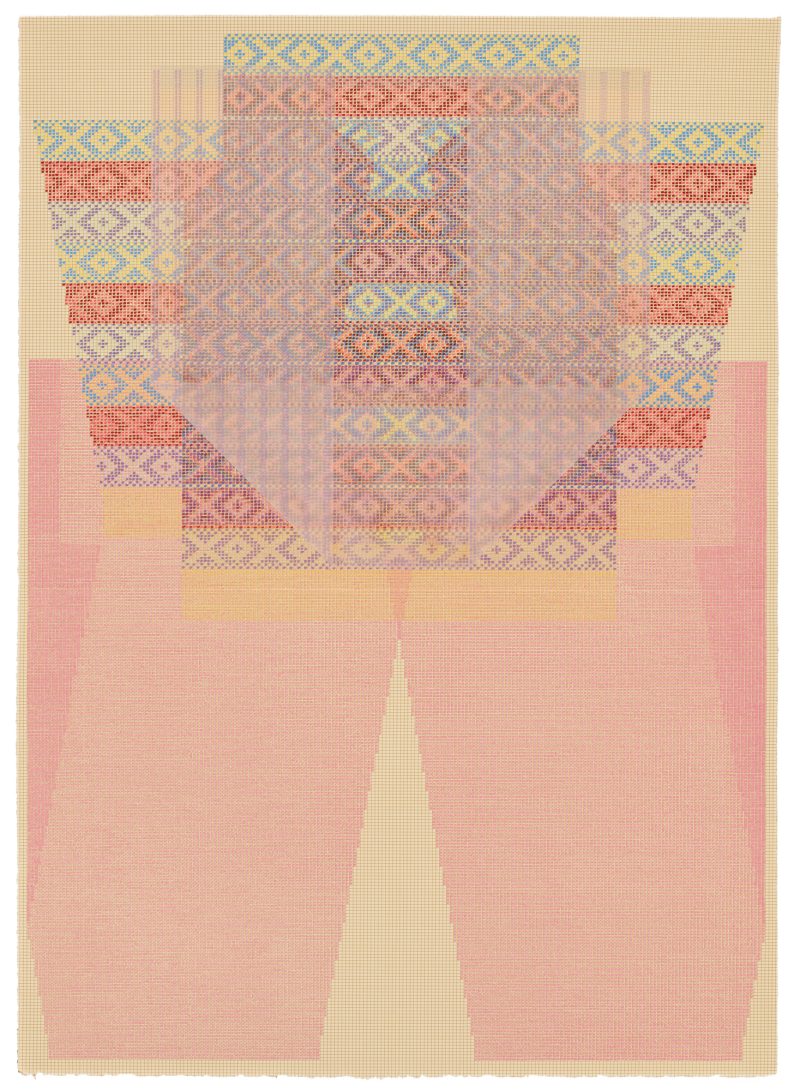
Ellen Lesperance, XOXOX (All Day), 2023 (23-314)
$3,500.00 -
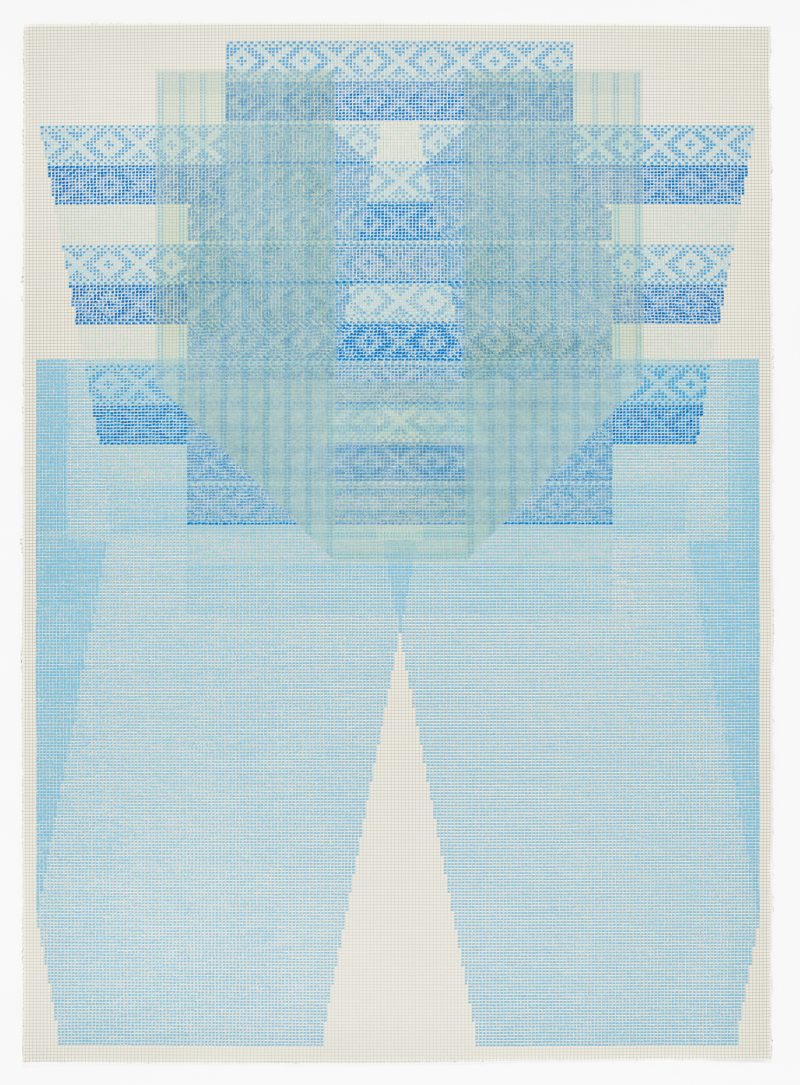
Ellen Lesperance, XOXOX (All Night), 2023 (23-313)
$3,500.00 -
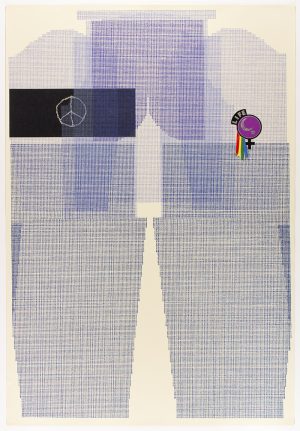
Ellen Lesperance, LIFE, 2020 (20-302)
$3,500.00 -
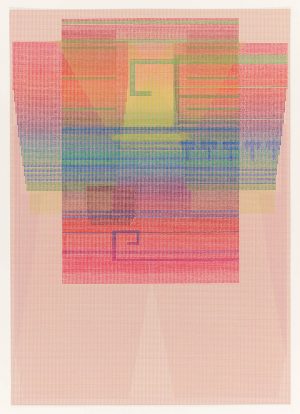
Ellen Lesperance, The Final Path of Feminye, 2020 (20-303)
Please Inquire -
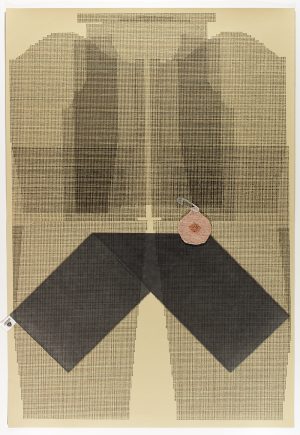
Ellen Lesperance, Who Killed Karen Silkwood?, 2020 (20-301)
$3,500.00
LIFE, 2020
“Life, 2020, is the gridded matrix of a garment pattern (a hooded sweater) comprised of deep purples and blues, punctuated by two distinctly legible political embellishments: an opaque black armband with a crocheted white peace sign, and a vibrant badge in the shape of the gender symbol for “woman” that says LIFE with dangling rainbow-colored ribbons (which may or may not have had the queer associations that rainbows currently signify). Traditionally worn as a sign of mourning, the black armband became an anti-war symbol during the US conflict in Vietnam; its widespread use as an everyday protest was spearheaded by five students in Iowa in 1965. Political buttons, badges, pins, armbands, and other adornments serve to underscore that all dress is a form of loaded signaling; even the plainest pair of jeans conveys a wealth of meaning related to time period, region, class, race, gender, status, age, and many more categorizations. It is thus significant that Lesperance trains her eye on histories of sartorial defiance from the subtle to the overt.”
— Julia Bryan-Wilson
Read the full essay

Left: Video still, Can’t Beat it Alone, Amber Current Affairs Unit, 45 minutes, 1985.
Right: Handmade badge on left that Lesperance created for garments worn by Portland protesters; on right, LIFE badge recreated and hand-printed at Tamarind Institute.
The Final Path of Feminye, 2020
“Lesperance’s third print is a vibrantly rainbow-hued work entitled The Final Path of Feminye, 2020; generated from nine layers of ink, the piece glimmers and shines. Based on black-and white photographs of a Greenham Common camper wearing a striped sweater while performing acts of maintenance needed to keep the encampment functioning (such as carrying large containers of water), the sweater has been rendered as a riot of variegated color whose grid approximates variegated yarn. This sweater has been tracked by Lesperance over the course of many years of researching Greenham Common; she recently discovered an image that included the sweater’s back, so she was able to make this print using that extra information. Unlike the other two prints, it does not incorporate a badge or pin, but its pattern does include the labrys (the double-sided ax) and other symbols for the women’s liberation movement and lesbian feminism.”
— Julia Bryan-Wilson
Read the full essay
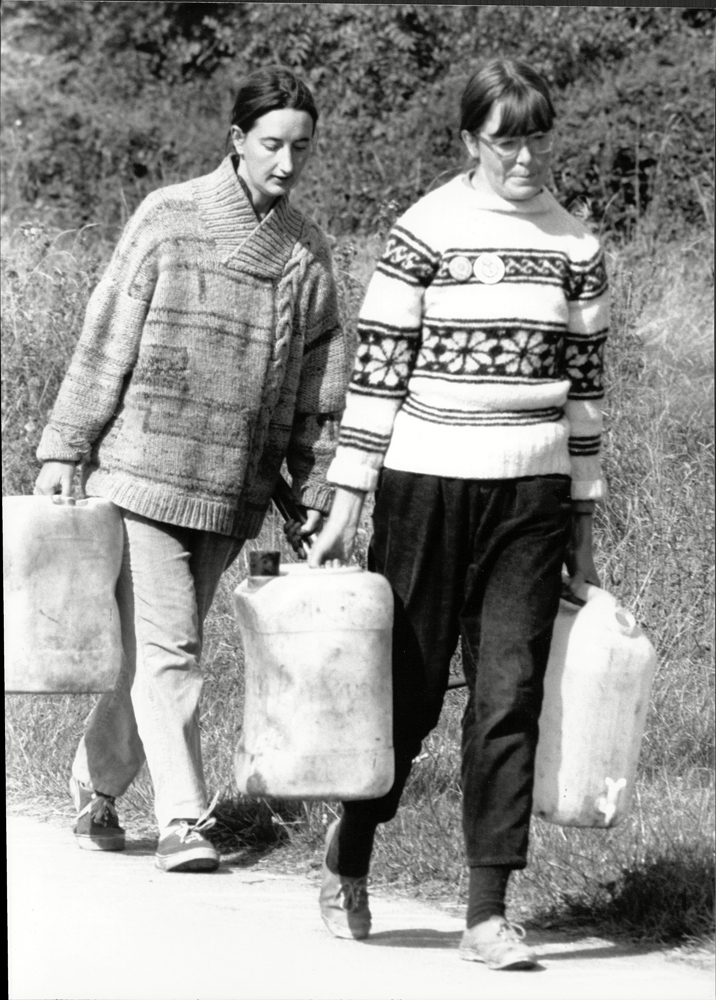
Greenham Common Peace Camp, 1987. Photograph by Jenny Goodall. Courtesy Shutterstock.com.
Who Killed Karen Silkwood?, 2020
— Julia Bryan-Wilson
Read the full essay
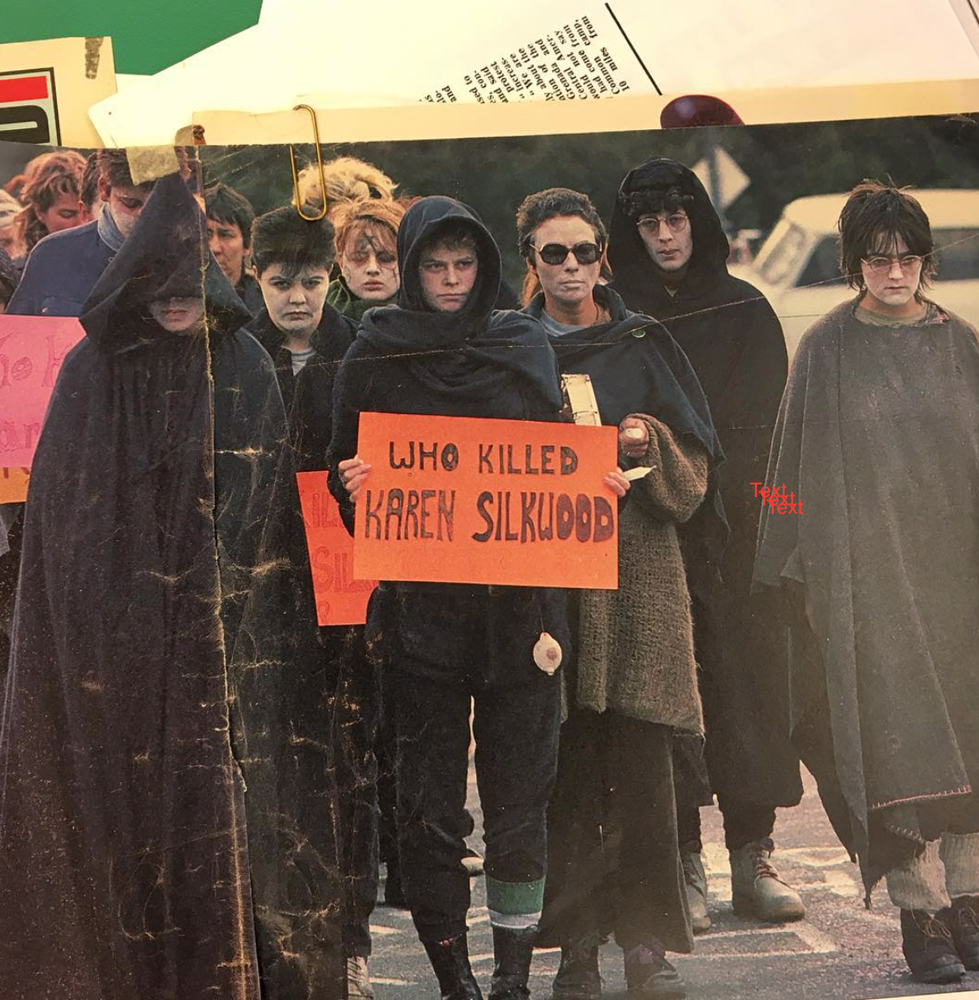
Who Killed Karen Silkwood? Feminist Archive South in Bristol, UK: periodical and photographer are unknown.
Ellen Lesperance arrived at Tamarind Institute in the summer of 2020 for the Frederick Hammersely Residency, amid widespread demonstrations, wildfires, and a global pandemic. She made the trip by car for the high desert adventure in collaborative printmaking, driving with her family from their home-base in Portland to Albuquerque for a four-week residency.
The Frederick Hammersley Artist Residency invites artists who are new to printmaking to explore the possibilities of lithography with the guidance of a team of skilled printers. Lesperance brought reference materials and a plan to render a trio of 20th century female activists through their garments. Her practice involves the close study of archival photographs of women-led protests, mapping out and recreating their sweaters and outerwear through gouache paintings and knitted objects; the research contributes to her exacting recreation of the protestors’ garments, many of which were knitted during the Greenham Common Women’s Peace Camp, an anti-nuclear weapons encampment in Berkshire, England (1981-2000). Lesperance brings a new representation of the female body through the formal structure of American Symbol Craft, celebrating feminist activism and the enduring spirit of peaceful protest through a hand-drawn language of knitwear. Her renderings stand in for iconic and anonymous activists and warriors through time, with humanizing details called out in small embellishments, badges, pins, and symbolic sweater patterns. Lesperance infuses the garments with a kind of quiet defiance, giving them the weight of a tribute.
During her residency, Lesperance experimented with the interaction of color through multiple layers and explored lithography’s capacity for both transparency and opacity. Each garment is based on a historic photo, and the titles reference this source material.
More Information
Artist Website
Artforum
BOMB
Frederick Hammersley Artist Residency
The Frederick Hammersley Artist Residency, established in 2017, creates an opportunity for an artist to consider Hammersley’s legacy as a painter and printmaker, as well as his influence as a conceptual thinker.

